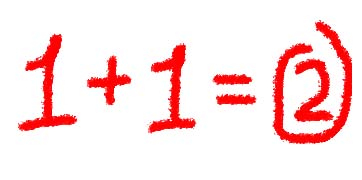Scoping Out Great Search Engine Results
Using Good SEO Techniques

Are you looking to make the most sales possible online? If so, then it is in your best interest to learn a little about what is known as Search Engine Optimization or SEO.
Search Engine Optimization (SEO) is critical to high ranks in search engines and greatly determines one's success as an online retailer.
In a nutshell Search Engine Optimization is the method behind gaining the best ranks possible in search engines like Google, Bing, Duck Duck Go, etc. The old adage of “if you build it, they will come” is absolutely false. When you have low ranks in the search engines the fact is unless you are doing other marketing techniques to drive brand awareness online people will not even know you exist and they in fact will not come. No visits in turn equals no sales.
In regards to SEO the subject itself is huge and most of what you will read online is written by self-proclaimed experts who are merely parroting information of other self-proclaimed experts all of which have little to no experience or proof to back up their claims. The advice here is take what you see online with a grain of salt.
Let’s start with the basics so you have a good understanding of how to prioritize your focus on good SEO techniques when it comes to online and ecommerce sales.
First you should know that search engines use what is known as an algorithm (fancy way of saying math equation) to define what websites rank and where in the ranks a website will land. Google’s algorithm has over 200 variables, is constantly changing and is kept top secret as it defines their market dominance in search.
So, if the equation is secret, how do you know how to use it to your advantage? While the equation itself is secret Google is actually quite open about what the individual variables are and their level of importance. It is the most important variables we are going to focus on as those will prove to give you the greatest impact the quickest.
Content:
Without a doubt content is king when it comes to good search engine ranks. It is not only about the quantity but also the quality. This alone is a huge sub-topic in the field of SEO but here we will focus on the basics.
When there is not much written content on a topic it is seen as “thin”. Thin content will only typically be ranked, if it is incredibly unique. So, if you are writing about a really obscure product that no one has covered then a paragraph or two may get you a top rank. On the other hand, if you think writing a single sentence product description about the product is going to get you any attention you are sadly mistaken. If you think taking the manufacturer's description and pasting it on your product you can expect to have the same low ranks as the hundreds of other of their online sellers. Low ranks translate into low sales.
In terms of quality of content some may think that is easy. Their thinking is I will just grab an article, paste it on my website, and I am good to go. Again, sadly mistaken. When Google indexes content it notes who the original authors are. When it sees duplicate content on different sites it will reduce the rank it gives to your swiped content and often-times will not rank it at all. Potential copyright violations can get your website shut down, even if you are not discovered by the original author. Google may go as far as blacklisting your website from being indexed hurting your entire site and not just the content that was posted.
When dealing with duplicate content there are basically three types: unique, syndicated, and copied. Unique will always get the best ranking. If content is needed but subject knowledge or time is short you may want to think about syndicated content. This is content that you have been given the permission to use. As long as a huge portion of people are not also using the same syndicated content this can give moderate boosts to your ranks. Overly syndicated content never ranks well. For example with services like Gearfire that syndicate their product content for the weapons industry many weapons relate ecommerce owners think this is a short cut to an online presence merely to realize they do not rank well and thus they also do not make many sales, if any at all online. When was the last time you saw a Gearfire site (if you are even aware of who they are) come up in your search engine search? Likely never. (reviews - https://www.yelp.com/biz/gearfire-scottsdale) Same goes for scraped content from brands about their products. If your idea is to merely scrape those product descriptions, then you should realize you will also be scraping bottom end ranks.
Imagery:
The next big rank booster or killer is your images. As mentioned, if your idea is to just go grab a bunch of brand stock images you should know that not only are these not going to help your rank but they are often times so boring they will turn off your prospect customers.
The best imagery to use is your own. This not only gives you the unique content Google loves but also gives you the creative control that can help drive interest and sales. It also provides quality content that can be spread across other marketing media, such as social accounts, directories, printables, etc.
Don’t just stop at one image for a product. Get several pictures from different angles helping to highlight all perspectives and features. Every picture you add to your product is one more opportunity to rank well in the search engines. In fact, many search engines have a special search feature where you can search on images alone. Next time you are looking for a product check it out. Many online buyers are now using this feature almost exclusively to cut through the clutter of a normal search process.
Notice in the following search on Google the difference. The left panel shows a normal search on Glock 19 and the panel to the right shows what an image search reveals when selecting the image search tab.

Two lessons here. The more pictures you have the more opportunity there is to rank and the more appealing they are the more likely they will be clicked. Think stock images are the way to go, think again, which of the images on the right panel would you most likely click on?
One final lesson in regard to images. NAME THEM! Google does not understand what il_340x270.2233469905_bbqf.jpg means. Instead try something like your-business-name-glock-19.jpg. One of the major disadvantages of most ecommerce platforms is they either do not allow for custom picture naming or will rename a picture you have posted to something that makes no sense at all for the search engines. This is a huge rank killer. At online-ecom we have built our platform with SEO at top of mind. We realize if it is not at the top of our mind, it will not be at the top of Google’s mind and thus it will never be presented well to a potential customer and be at the top of their mind.
Quality Links:
One of the big factors Google and others use to determine ranks is how many other quality sites are also linking to your content. Notice the term quality. Getting a link from a car dealer or shoe site to a weapons related ecommerce website is not quality, as they are not related. Getting a link from a brand or niche directory in your retail field however can have a huge positive impact. Receiving links back from industry blogs and being posted in the right social media platforms as well can lead to big results.
Social:
In the last paragraph we mentioned being part of the right social platforms. While there are advantages to social platforms such as Facebook and Instagram from a marketing perspective if the goal is to garner the best SEO value you need to consider other options. The reason for this is that content on those platforms have a little piece of code attached called a no-follow tag. This means it tells search engines like Google to “not follow” the link to your website and thus it gives your website zero link credit.
One nice social site that does not include such code is Pinterest. This means when you post content there that links back to your website you are getting credit for the link. Most people dismiss Pinterest as they have not heard of it or believe it not to be popular enough to warrant the work. The idea behind Pinterest is it has a focus on “enthusiasts”. So, while their network may not be as large as the user base of Facebook or Instagram it is MUCH MORE focused. In fact, it is laser focused. This means the leads you get from Pinterest will be much higher quality. It is not just about how many eyes you are in front of but who those eyes belong to. Gaining the eyes of cleavage chasers on Facebook typically means no sales, enthusiasts from sites like Pinterest mean high quality leads and in turn more sales.
Other high value social options can be niche social platforms and user forums. These are great and many allow certain levels of self-promotion. Just be careful when using such services that you understand their use regulations and do not step on the toes of their users or administrative staff with offensive hard sells. Soft selling is often overlooked and even appreciated if it is attached to quality content such as a valuable resource posting.
Here is the difference between an offensive hard sell and a helpful soft sell:
Hard Sell:
Buy your part from partdude.com
Soft Sell:
In our research at WeaponsCommerce.com on ballistics we have found the following brands to be high quality choices for defensive carry. Article continues…..
So, there you have a very basic and short overview of what will help you get the best search engine ranks. At online-ecom we can not only help you develop a powerhouse ecommerce presence but have built a platform that focuses on high quality SEO practices to help give you the greatest chance at online success for your business.







